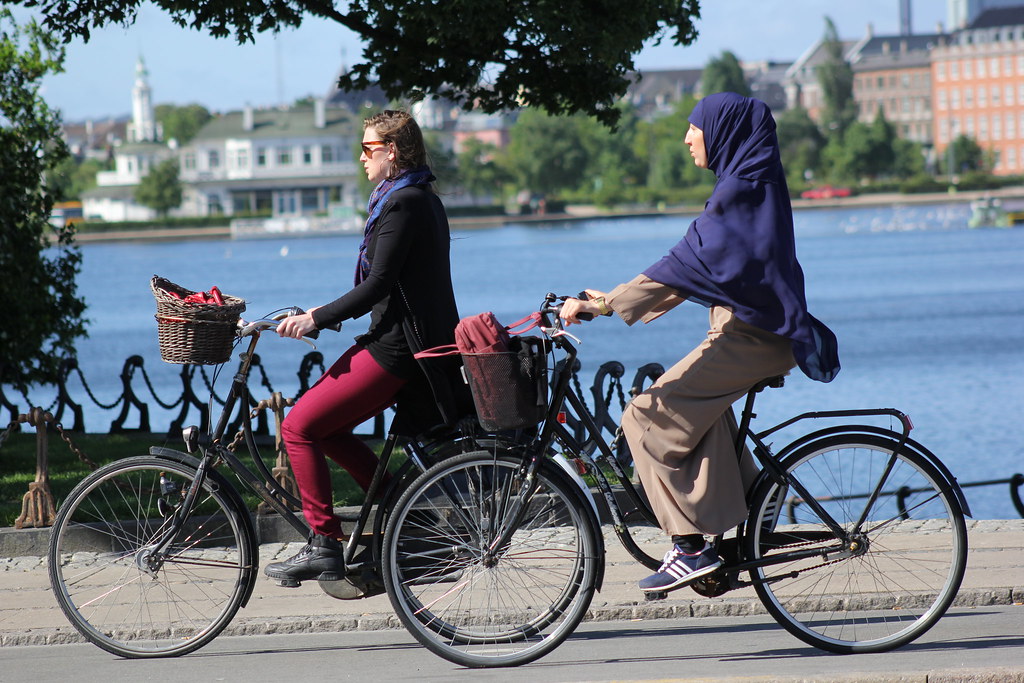This blog series is a space to share thoughts and musings arising from the Covid-19 pandemic, and its impacts on current and future landscapes.
This piece is submitted by Ed Wall, who teaches the design of landscapes and cities in London and Milan. He previously worked as an urban designer in New York City before being awarded a PhD Cities from the London School of Economics and Political Science.

As the Westminster government prepares to ease the ‘stay home’ message there are more options for transforming our public spaces than making parks available for picnics and sunbathing – this article explains how public calls for an expansion of green spaces and cycle networks could be realised.
There has been a long tradition of keeping people out of open spaces in Britain, from the enclosures of common land in the thirteenth century to the privatisation of public spaces that continues apace today. The coronavirus lockdown, that has kept us out of parks, playgrounds and beaches around the country in recent weeks, has made us realise the importance of accessing green and open spaces. But once the government eases these restrictions will they become only a footnote to more enduring laws that determine how we can use the beautiful places in our towns, cities and the countryside? Or as we come to terms with everyday distancing is there a new public life that we can claim?
The geographer Don Mitchell describes, in his book The Right to the City: Social Justice and the Fight for Public Space, that public space must be taken and made public. This involves people making claims to how their neighbourhoods, cities and surroundings are accessed and used. As more parks, squares and street spaces will be needed to accommodate a population coming outdoors for the first time in two months (but while also keeping a distance from each other) finding ways of realising an expanded public realm will become increasingly urgent. Will the government respond to this new need or will we have to politely squeeze into the already congested bike lanes and poorly funded parks?
In cities like London, there are many gated gardens, golf courses and private estates that if opened up to the public could ease the congestion of the city’s parks. Gardens such as those in Eaton Square and other closed-off green spaces could provide an important expansion of our overcrowded public parks. Such a proposal follows Prof Susan Michie, who sits on the government’s scientific advisory group on coronavirus, and who described how private green spaces should be officially opened up to ensure everyone can exercise at safe social distances [1].
There are many recent examples of the government acquiring private land for the public benefit, whether for realising public infrastructure such as HS2 and even for facilitating urban regeneration masterplans [2]. The long-term prospect of social distancing across the UK could warrant the use of Compulsory Purchase Orders [3]. In this instance there could be much wider environmental and socially equitable benefits than either high speed train connections to London or urban regeneration that frequently benefits private developers more than local residents.
There is also impressive precedent in cities such as Copenhagen and New York City for managing vehicular traffic to make more space for cyclists. Knowledge of how to address cities overwhelmed by cars and plagued by increasing levels of pollution has advanced so significantly that there are now numerous examples of cities expanding pedestrian pavements, reducing traffic and giving roads over to cyclists. The Danish urban designer Jan Gehl is famed for his resolve in making pedestrian and cycle-oriented environments, already with success in New York’s Time Square and Brighton’s New Road [4]. Many of these projects began with low-cost temporary road and lane closures with limited new infrastructure beyond sturdy bollards and moveable outdoor furniture.
If there are strong reasons for creating more open space and clear examples of where it has worked, how can we ensure that these changes come about? Following Don Mitchell’s advice, the roadways need to be claimed for cycling and private green spaces need to be appropriated for use by all citizens. This is not a radical proposition but a practical response to the convergence of many public concerns – from a global pandemic to concerns for pollution and from historic exclusions of people from privatised areas of our cities to restricted access to our countryside. Public spaces are formed by people around issues of concern. Now is the time to claim an expanded public realm for our new public lives.
[1] Private schools’ land targeted for families without gardens – https://www.theguardian.com/world/2020/apr/12/private-schools-land-targeted-for-families-without-gardens
[2] Heygate compulsory flat purchase order is upheld – https://www.bbc.co.uk/news/uk-england-london-23371735
[3] Planning and Compulsory Purchase Act 2004 – http://www.legislation.gov.uk/ukpga/2004/5/contents
[4] Story of cities #36: how Copenhagen rejected 1960s modernist ‘utopia’ – https://www.theguardian.com/cities/2016/may/05/story-cities-copenhagen-denmark-modernist-utopia
If you’d like to submit a response, or your own thoughts on Covid-19, be it writing, images, audio or video, please write to Sarah: sarah.hobbs@landscaperesearch.org.
